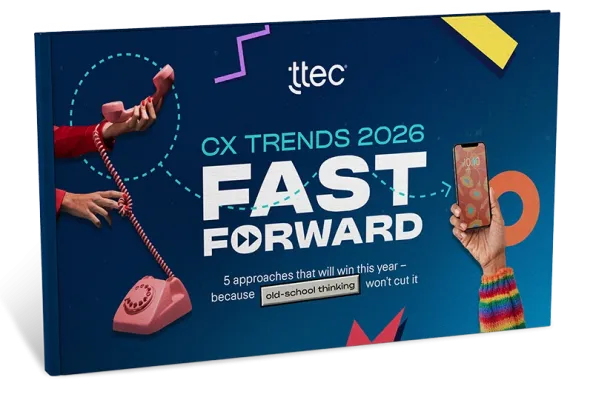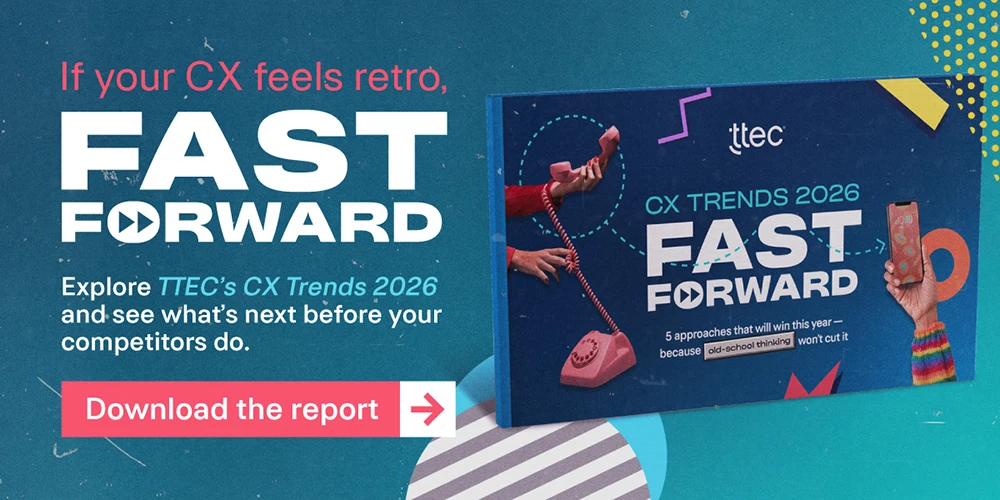When it comes to resolutions, speed is the name of the game – and nothing’s more aggravating to customers than failing to resolve an issue because they can’t understand the person on the other end of the conversation.
Language and communication barriers are extremely frustrating. When customers or associates have to repeat themselves, it increases handle times, hurts customer experience (CX), and reduces customer satisfaction. It also results in poor employee experience.
But AI-enabled voice enhancement tools are giving brands more options than ever to remove confusion from the conversation. Here are three ways AI can facilitate seamless interactions in the contact center.
1. Real-time voice translation
It’s a struggle all too common when deciding where to locate contact centers: brands need support in certain languages, so they end up choosing sites based on language offerings, even if those sites aren’t the best fit for the brand’s overall needs.
Thanks to advances in AI, companies no longer have to sacrifice other customer experience KPIs in the name of superior language support. TTEC’s award-winning voice translation solution ADDI enables seamless interactions between customers and associates, no matter where in the world they are located.
ADDI is an AI-powered, real-time translation tool that is bi-directional and natural, allowing each party to speak and hear in their native language. It translates languages in less than a second, facilitating quick and easy conversations that improve experiences for customers and associates alike.
It’s easy to integrate, supports more than 30 languages, and provides natural-sounding AI voices. With it, brands can access flexible support options for genders, languages, and regional accents.
In pilots, ADDI has reduced wait times, decreased frustration, and improved efficiency. We project ADDI can reduce spending on human interpreters by more than 80% and reduce spending on challenging language support by $5,000 to $30,000 per full-time equivalent (FTE) annually.
With real-time voice translation tools, brands can focus on hiring associates with the skillsets and traits that will drive success, rather than having to hire mainly based on language. And while ADDI is particularly revolutionary in the voice space, it works well via chat, messaging, and other channels as well.
ADDI also provides full transcripts of every conversation and reports on usage and consumption – a wealth of knowledge and can be fed into quality and analytics tools to identify actionable insights and guide business decisions.
2. Accent softening
Not all interactions require full-on translation; some just need a bit of additional clarity to get customers the answers they need quickly. AI-powered tools can help here, too.
When a client wanted to simplify interactions, speed resolutions, and provide a better experience for customers calling its global technology help desk, accent softening technology was an essential part of the solution.
The company’s contact center associates worked offshore in India and were well-trained and proficient in English, but call times were longer than desired because information sometimes needed to be repeated or clarified. Adding to the urgency, customers calling the help desk usually were already agitated; they were frustrated they had to call for support when they were unable to troubleshoot on their own.
TTEC deployed a voice enhancement solution that softened accents of non-native speakers dynamically, in real time. The AI-enhanced tool did not eliminate accents, and customers knew they were calling an offshore site, but it modified audio on the caller’s end to add clarity, definition, and a little bit of space between spoken words if an associate tended to speak rapidly.
The results? Average handle time (AHT) dropped 15%, or 3.5 minutes; ambiguity decreased by 7%; and the amount of dead air decreased by 58%.
3. Noise cancellation
Background noises are common culprits when it comes to poor CX, especially as a growing number of contact center associates work from home. A barking dog, construction, police sirens and other noises can make conversations frustratingly difficult to understand.
AI-enabled tools can block ambient noise during interactions to improve audio clarity, CX, and AHT.
When a leading healthcare company noticed background noise was leading to frustrated customers, prolonged handle times, and eroding satisfaction scores, TTEC quickly launched a pilot of AI-powered noise cancelling technology within two weeks.
The solution avoided the need for costly telephony integration and pricey noise cancellation headsets, and drove quick results. Customer-reported noise issues fell a whopping 99.3% and NPS rose 9%, prompting the company to roll the technology out to 2,700 associates.
Remove noise, confusion from the conversation
As AI-powered tools keep evolving, brands have more ways than ever to facilitate seamless conversations between customers and associates.
If navigating the growing list of options is daunting, or you lack the needed expertise in-house, partner with a proven CX expert that can provide the tools, strategy, and people you need to harness AI’s full potential.
Investing in clearer conversations will pay dividends throughout the contact center, in the form of shorter handle times, happier associates, and improved customer experience.















